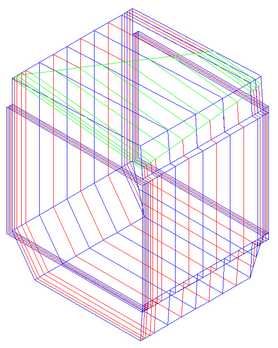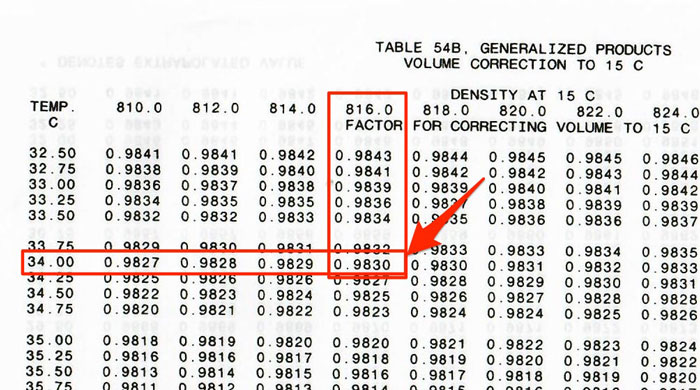- Tank Ullage Calculation
- Tank Ullage Calculation
- Tank Ullage Calculator Formula
- Ullage System
- Tank Ullage Calculator Equation
Ullage.This is a measurement of space between the surface of liquid in a tank and the top of the tank inner surface. Ship's ullage tables are drawn up, based on the internal volume of a tank measured from some reference point, e.g., the lip of an 'ullage' hole. Tank Volume Calculator Select the style of tank and its dimensions to calculate the capacity. Optionally, enter the filled depth to calculate the volume of liquid in a tank.
Tank contents with heel and trim| 1 | Specify list and trim |
| 2 | Calculate tank particulars |
| 3 | Print all tank particulars on paper |
| 4 | Cargo/ullage report, and historical cargo summary |
| 5 | Export tank data to a loading condition |
| 6 | Import tank data from tank measurement systeem |
| 7 | Up-to-date overview of filling and flow rate per tank |
An input window pops up, where the following data can be given:
- Trim in meters (Trim by bow positive), which is the difference in draft on the FPP and the APP (Tfpp - Tapp).
- Angle of inclination in degrees only positive angles can be filled in here.
- The above given heeling angle is to PS or SB.
- Mean draft. This draft is read out by the draft sensor, which is an option in the context of LOCOPIAS. For calculating the tank capacities only, it is not required to give a draft.
An input screen appears for defining all tank particulars, such as sounding or ullage, volume, density and weight. If one of these items is changed, the other items will be adjusted automatically. The ullage can only be used if a sounding pipe has been defined for the specific compartment (for which reference is made to Sounding pipe). In the alternative window the LCG, VCG, TCG and FSM can be read. By pressing , with the cursor on the line of a compartment, a number of particulars can be defined for the specific compartment:
View and Download FujiFilm GA645Zi owner's manual online. GA645Zi digital camera pdf manual download. View and Download FujiFilm GA645 owner's manual online. GA645 film camera pdf manual download. Also for: Ga645w.
Tank Ullage Calculation
- No temperature correction.
- Correction factor per degree. The ‘Volume Correction Factor' is calculated according to the defined temperature and the correction factor per degree (coefficient of expansion).
- Volume Correction Factor. The ‘Volume Correction Factor' can be defined directly.
- Table 54B. The ‘Volume Correction Factor' is determined according to ASTM table 54B.
- Table 55. The ‘Volume Correction Factor' is determined according to ASTM table 55.


- This factor is defined manually, using conversion table ‘Volume Correction Factor'.
- This factor is calculated with the correction factor per degree and the difference between the standard and actual temperature. The conversion table ‘Correction factor per degree' must be selected.
- This factor is read out from the conversion table ‘Table 54B'.
- This factor is read out from the conversion table ‘Table 55'. This factor corrects the density at 15° Celsius of the substance for the actual temperature.

With this option the tank volumes etc. (the same as in the input window of the previous option, see Calculate tank particulars) will be printed. Ios 9 software for android. An example is pasted just below.
Cargo/ullage report, and historical cargo summary| 1 | Print Cargo/Ullage report on screen |
| 2 | Print Cargo/Ullage report on paper |
| 3 | Print historical cargo summary |
| 4 | View and maintain historical cargo summary |
Print Cargo/Ullage report on screen
This option allows you to print an overview of all onboard cargoes, including their weight, temperature effect, sounding and ullage etc., see example below. This list includes only those tanks of which the detail particulars (as discussed in Calculate tank particulars), at the second row ‘include this tank in ullage report' is switched on. Before this report is created some more questions might be asked, such as the Bill of Lading weight, and whether this list should be stored at the historical cargo summary.
Print Cargo/Ullage report on paper
Tank Ullage Calculation
The same as previous option, albeit with output to paper.
Tank Ullage Calculator Formula
Print historical cargo summary
View and maintain historical cargo summary
Cyberlink powerdvd 17 serial key. These options will speak for themselves.
A list of all defined loading conditions appears. One of these loading conditions can be selected. The selected loading condition will be copied and the tank data of the sounding module will be sent to this copy. The name of this new loading condition will be: name of selected loading condition + ‘tank reading' + date + time.

Tank Ullage Calculation
- No temperature correction.
- Correction factor per degree. The ‘Volume Correction Factor' is calculated according to the defined temperature and the correction factor per degree (coefficient of expansion).
- Volume Correction Factor. The ‘Volume Correction Factor' can be defined directly.
- Table 54B. The ‘Volume Correction Factor' is determined according to ASTM table 54B.
- Table 55. The ‘Volume Correction Factor' is determined according to ASTM table 55.
- This factor is defined manually, using conversion table ‘Volume Correction Factor'.
- This factor is calculated with the correction factor per degree and the difference between the standard and actual temperature. The conversion table ‘Correction factor per degree' must be selected.
- This factor is read out from the conversion table ‘Table 54B'.
- This factor is read out from the conversion table ‘Table 55'. This factor corrects the density at 15° Celsius of the substance for the actual temperature.
With this option the tank volumes etc. (the same as in the input window of the previous option, see Calculate tank particulars) will be printed. Ios 9 software for android. An example is pasted just below.
Cargo/ullage report, and historical cargo summary| 1 | Print Cargo/Ullage report on screen |
| 2 | Print Cargo/Ullage report on paper |
| 3 | Print historical cargo summary |
| 4 | View and maintain historical cargo summary |
Print Cargo/Ullage report on screen
This option allows you to print an overview of all onboard cargoes, including their weight, temperature effect, sounding and ullage etc., see example below. This list includes only those tanks of which the detail particulars (as discussed in Calculate tank particulars), at the second row ‘include this tank in ullage report' is switched on. Before this report is created some more questions might be asked, such as the Bill of Lading weight, and whether this list should be stored at the historical cargo summary.
Print Cargo/Ullage report on paper
Tank Ullage Calculation
The same as previous option, albeit with output to paper.
Tank Ullage Calculator Formula
Print historical cargo summary
View and maintain historical cargo summary
Cyberlink powerdvd 17 serial key. These options will speak for themselves.
A list of all defined loading conditions appears. One of these loading conditions can be selected. The selected loading condition will be copied and the tank data of the sounding module will be sent to this copy. The name of this new loading condition will be: name of selected loading condition + ‘tank reading' + date + time.
Ullage System
With this option the soundings or ullages of the tank measurement system can be read out and processed in the list of all tanks ( Calculate tank particulars).
Tank Ullage Calculator Equation
This option opens a window in which the current filling and flow rates are displayed for each tank, as well as the remaining time until the desired filling percentage will be reached. These values are refreshed by default every five minutes, but that interval is adjustable. Obviously, this option can only work if there a connection with a tank measurement system is available.
